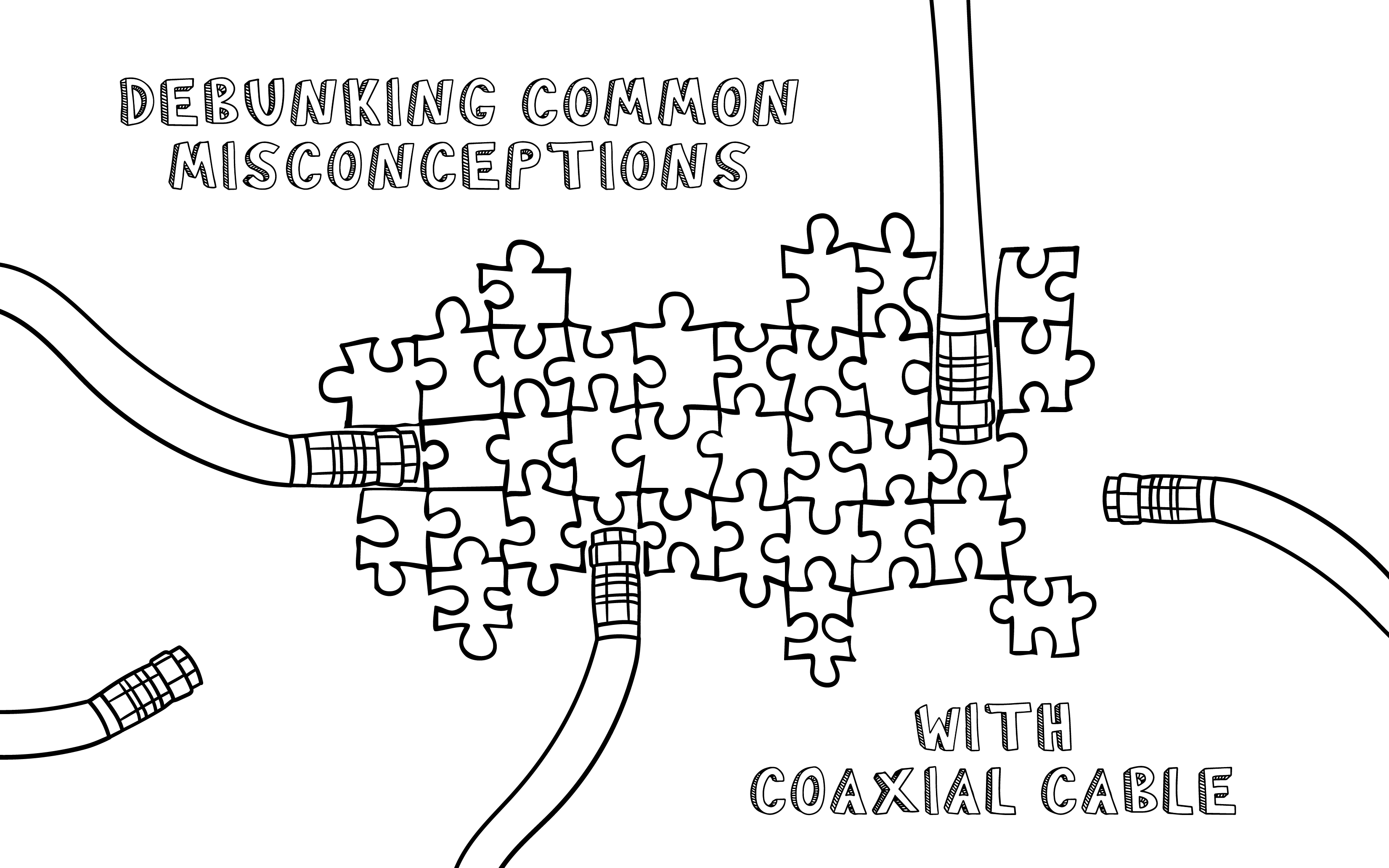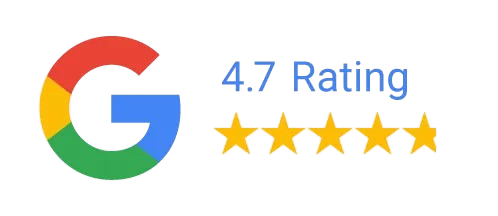Payment methods accepted

Debunking Common Misconceptions with Coaxial Cable
Written by Dave Harris, trueCABLE Technical Specialist, BICSI INST1, INSTC Certified
Coaxial cables have been a cornerstone of data transmission for decades, powering everything from cable television to high-speed internet. Yet, despite its widespread use, coaxial technology is surrounded by misconceptions that often lead to confusion.
In this blog, we’ll tackle the most common myths and misconceptions about coaxial cables, explain the facts, and help you make informed decisions for your projects.

Let’s jump right in!
Misconception: Coaxial cable does not need to be grounded.
Actually, according to the National Electric Code (NEC), it does need to be grounded. And in case your coax happens to be heading up an antenna mast, the mast needs to be grounded, too. If your cable service uses coax to enter your house, there is a grounding block near the cable entrance which is bonded to the ground system of the structure, usually at the ground rod. So in most homes, the coaxial cable network is already grounded.
You might be installing coaxial cable for a different purpose, like installing a satellite dish. You will need to make sure that the cable is grounded, not only to satisfy the code, but for it to work properly, as well. To ground the cable, install a grounding block for f-connectors. Use a #14AWG wire to bond the block to the ground system. If you have a mast that you need to ground also, use a #10AWG wire to the ground system for making the bond to the antenna mast.

Grounding block for coaxial cable using f-connectors. (channelmaster.com)
Cable installers usually bond the coaxial cable entrance to the ground rod, since in most homes, they are likely to be close together. Even if this is not the case, we recommend against driving a new ground rod. Any added ground rods must be integrated into the existing ground electrode system, and there are rules for doing that. If this looks like an issue, it would be good to have an electrician on board.
If you’d like to see more about coaxial cable installation tips, take a look at “How To: Install Copper Ethernet and Coaxial Cable for Success.”
Misconception: Coaxial cable can’t operate at today’s network speeds.
The performance of a cable is dependent on attenuation (signal loss in dB/100ft), external electronic effects such as electromagnetic interference and static buildup, and limitations of the technology providing the signal. For most users at this time, Internet service over coax is limited to around 1Gbps using technologies like DOCSIS and MoCA. Subscribers to services provided over optical fiber are also running at 1Gbps for most users. So, you might say that coax is operating fine at today’s network speeds. But some of the fiber providers are starting to offer services at 2.5, 5, and 10Gbps. We’ll see if the coax technologies can keep up.
Misconception: Quad-shielded coaxial cable provides faster performance over longer distances than dual-shield.
Consider quad-shielded cable only after considering the electronic environment at the installation site. If there is a source of either static charge or electromagnetic interference, then you should consider quad-shield cable. The only difference between dual-shield and quad shield is the amount of shielding. If there is nothing to shield from, then there is no difference in performance. Without a nearby source of electromagnetic interference or static, there is nothing to be gained by using quad-shield cable.
Also, remember that quad-shielded cable is heavier, bulkier, stiffer, and often more difficult to terminate. I think quad-shield coax is great, but only when I need it.
Misconception: The tighter the braid, the more effective the shielding.
It might seem obvious that if you use more metal in the shield, then the shielding is more effective. However, the braided shield is just one part of the shield. The shield consists of the braided element, but also a foil component. The braid, foil, and even the bonding method are all part of a design that is optimized to provide the most effective shielding at the most common operating frequencies.
A heavier braid will also make the entire cable heavier. Not only that, but it will also make the cable stiffer and more difficult to terminate. Even if the braid appears to leave some gaps in the protective surface, you can be confident that the shield is engineered for optimum performance.
Misconception: Coaxial cable is a commodity item that will perform the same, regardless of price.
Not all coaxial cables are engineered and constructed the same. Also, quality of materials and workmanship varies between different manufacturers. Aluminum is widely used for both the braided and foil components of coaxial shielding, but watch out for aluminum in the center conductor.
For many applications, copper clad steel (CCS) is suitable for a coaxial center conductor, however, all of our coaxial cable is made with a solid copper center conductor, which maximizes conductivity and reduces signal loss due to attenuation. It might be a little more expensive, but we think the reduction in signal loss is worth it.
Misconception: Optical fiber is always faster than coax.
When it comes to coaxial vs fiber optic cables, it’s widely acknowledged that optical fiber is capable of achieving faster speeds under most conditions.
But let’s focus on the word “always.” That’s where things get tricky. Both coaxial cable and optical fiber theoretically transmit data at the speed of light. The key difference lies in attenuation: there’s more signal loss (attenuation) with copper in coaxial cables due to electrical resistance. This makes optical fiber generally faster across longer distances and higher data loads.
However, there are niche scenarios where coax might outperform optical fiber over very short distances. While I can’t think of a specific example off the top of my head, I can imagine it’s possible in theory.
Here’s a fun hypothetical: If your fiber optic cable has a single speck of dust on its end face, it could hinder performance enough that coax might actually be faster in that moment. Plus, coax doesn’t require as much maintenance—no need to carry around a dusting tool!
How about this one? If your fiber has a single speck of dust on its end face, then my coax will be faster. And I don’t have to carry around any dusting tools.
Misconception: Series-6 (RG-6) coax is an updated replacement for Series-59 (RG-59) coax.
Both Series-6 and Series-59 coaxial cable are still in use. Series-59 cable is used for low-frequency applications such as radio antennae and closed-circuit television. Series-6 cable is better suited to high-frequency applications like broadband data transmission and high definition television. Because high-frequency applications are far more popular these days, it might seem like Series-59 cable has been superseded by Series-6, but that is not the case.

The choice of cable is determined by the requirements of the electronic equipment that it connects to. Series-58 cable has an impedance value of 50Ω. Both Series-6 cable and Series-59 cable have an impedance of 75Ω. The proper cable must be chosen to ensure that impedance is matched throughout the transmission channel. All variants of coaxial cable still have their appropriate applications. If you’d like to see more about the differences between Series-59 and Series-6 coaxial cable, check out our blog entry, “RG59 vs RG6: Key Differences And Which Coaxial Cable Is Best For You.”
Misconception: Coaxial cable can transmit a signal farther than Ethernet cable can.
Back in the day of low-resolution analog signals, it was possible to effectively run coaxial cable for hundreds and maybe even a thousand feet. That might still be true for certain types of signals, but not for broadband data signals. For any given coaxial cable, the higher the frequency of the signal, the shorter the distance until the signal loss is too great to make use of what's left of the signal. Digital broadband and satellite systems operate at very high frequencies. For these signals, Series-6 (RG-6) coax can perform up to a distance of 46 meters (150 feet).

Ethernet (copper twisted-pair} cable was developed specifically for the transmission of digital data signals over the Ethernet protocol. It is designed to perform over a distance of up to 100 meters (328 feet). Series-11 (RG-11) coaxial cable can seemingly match Ethernet cable with a top distance of 100 meters, but Series-11 cable is bulky and stiff, making it unsuitable for installation in many situations. It is mostly used for distribution to multiple devices or users. You can read more about transmission distances over coaxial cable in, “How Long Can I Run Coaxial Cable?”
Misconception: Coaxial cable is obsolete.
Coaxial cable is still alive and well! It is used for transmission of cable television, closed-circuit television, audio-visual systems, and satellite television systems. When the Ethernet protocol was first developed, it used coaxial cable for network connections. It can still be used for that today, but the speed will be slow compared to copper twisted-pair Ethernet cable.

Network interface card with both coaxial and twisted pair connectors
So what about modern coaxial cable applications? Can you still use coaxial cable for Internet? New technologies such as DOCSIS and MoCA allow existing coaxial cable installations to be used for high-bandwidth applications. DOCSIS is a technology that allows for transmission of broadband signals for both cable TV and Internet to be distributed to premises over coaxial cable. MoCA is a technology that allows existing coaxial cabling already installed in buildings to be leveraged to transmit broadband signals. However, use of MoCA requires investment in electronic devices to transform the signal between protocols. Also, MoCA is currently limited to speeds of 1 Gbps. If you’d like to know more about MoCA and its benefits and limitations, check out our blog entry, “MoCA vs. Ethernet.”
If you want faster network speeds, coaxial cable inside the structure might actually need to be replaced. The new DOCSIS 4.0 technology promises 10 Gbps Internet service delivered over existing coax and hybrid networks. However, although DOCSIS modems and routers feature an f-connector for coaxial input, there is no provision for coaxial output. All output ports are RJ45 jacks for Ethernet cable. The good news is, so long as your interior coaxial cable isn’t stapled into place, you can use the old cable to pull in brand new Cat6A twisted-pair Ethernet cable, which will support speeds of up to 10 Gbps.
Conclusion
So there you have it. Nine common possible misconceptions about coaxial cable have been thoroughly mostly debunked.
Coaxial cable is still in common use and is expected to remain so. Coaxial distribution networks providing Internet service to buildings will soon operate at up to 10 Gbps with the rollout of DOCSIS 4.0. However, local area networks might benefit from an update to the cable infrastructure.
Coaxial cable remains a vital and versatile part of modern communication systems. By understanding the facts, you can make informed decisions and avoid common pitfalls. Hopefully, some of those decisions are getting easier to make.
Do you need high-quality coaxial cables for your project? Browse trueCABLE's selection of Series-6 cables, connectors, and tools today!
trueCABLE presents the information on our website, including the “Cable Academy” blog and live chat support, as a service to our customers and other visitors to our website subject to our website terms and conditions. While the information on this website is about data networking and electrical issues, it is not professional advice and any reliance on such material is at your own risk.



























